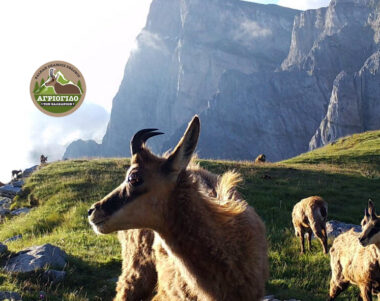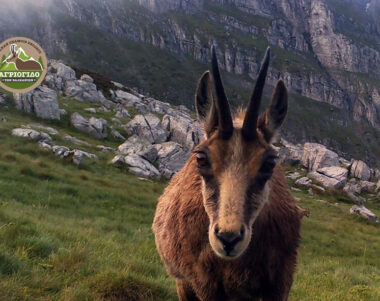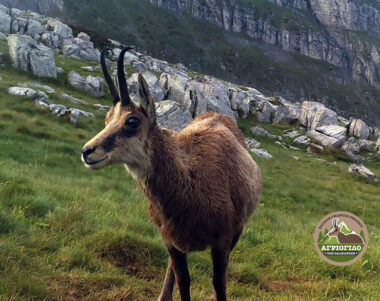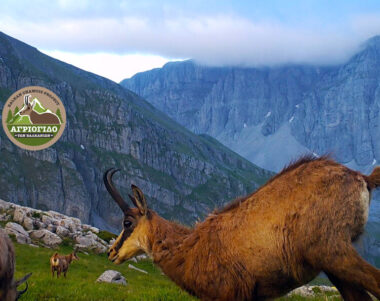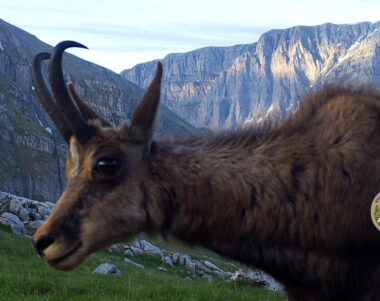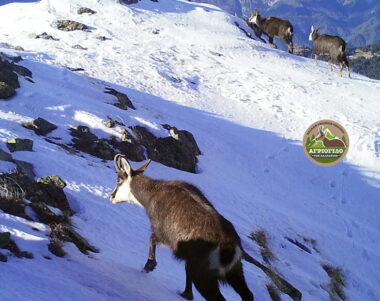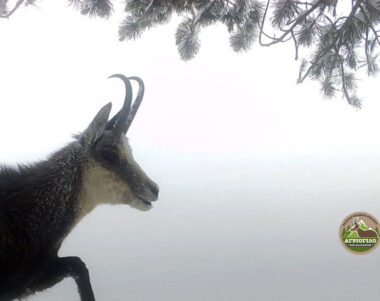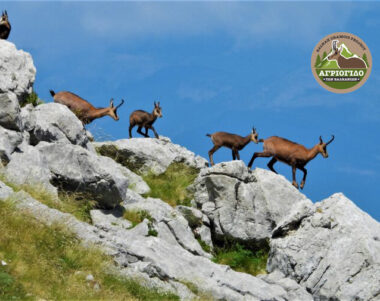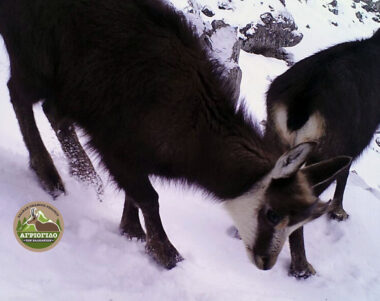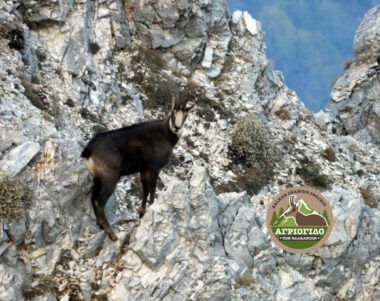Adaptations to the Mountain
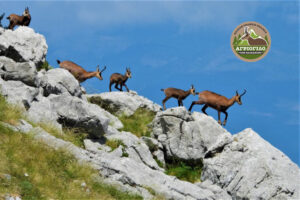 Like most large mammals living in mountainous regions, the Chamois (Rupicapra rupicapra) has developed specific adaptations to cope with the challenges of its environment: a) reduced oxygen levels, b) extreme law temperatures, c) movement on particularly steep terrains and across a variety of substrates and d) survival during the winter period in conjunction with limited food resources.
Like most large mammals living in mountainous regions, the Chamois (Rupicapra rupicapra) has developed specific adaptations to cope with the challenges of its environment: a) reduced oxygen levels, b) extreme law temperatures, c) movement on particularly steep terrains and across a variety of substrates and d) survival during the winter period in conjunction with limited food resources.
At high altitudes, there is a noticeable decrease in atmospheric pressure and consequently in oxygen content. Specifically, from sea level up to 2,000 meters, or even higher where Chamois are typically found, oxygen levels decrease by 22% to 33%.
To copy with its oxygen demands in high-altitude environments, the Chamois has a heart weighing between 300 to 350 grams, which is relatively large considering its body weight of 30 to 50 kilograms.
Each cubic millimeter of its blood contains approximately 12 to 13 million red blood cells. Its heart rate ranges from 80 to 85 beats per minute but can escalate to 200 beats per minute during intense physical activity.
For comparison purposes, the human heart weighs between 300 to 500 grams in individuals weighing 60 to 80 kilograms, and contains only 4 to 5 million red blood cells per cubic millimetre. Its lungs are highly developed, weighing about one kilogram.
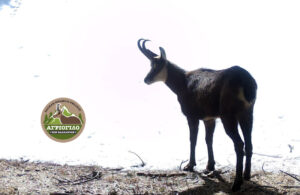 Regarding the cold, the Chamois manages to cope with it thanks to its dense winter coat, which consists of three layers, combined with its dark brown – almost black – color, which helps in the more efficient absorption of solar radiation.
Regarding the cold, the Chamois manages to cope with it thanks to its dense winter coat, which consists of three layers, combined with its dark brown – almost black – color, which helps in the more efficient absorption of solar radiation.
The Chamois is perfectly adapted to moving on the rugged terrain of the mountains. Its two hooves can diverge from each other and move forward and backward in relation to each other, allowing both hooves to always be in full contact with the ground. The hooves have a special design with a concave sole and suitable material, which increases traction on rocks, a sharp front edge, and a hard and sharp outer edge that facilitates walking on frozen snow or moving on steep grassy slopes.
Additionally, between the two hooves and at the highest part of their opening, there is a special structure covered with hair, which stretches when the two hooves are separated, thus limiting sinking into the relatively soft snow.
 Finally, the digestive system of the Chamois, which is similar to that of other ruminants, has the necessary stomach microflora to effectively utilize the tough and poor-quality food it is forced to consume in winter. Beyond this, the survival of the Chamois during the winter is primarily ensured by the energy reserves it collected during the summer, which are mainly stored in the liver and muscles as glycogen, and especially around the kidneys and beneath the peritoneum, as fat reserves.
Finally, the digestive system of the Chamois, which is similar to that of other ruminants, has the necessary stomach microflora to effectively utilize the tough and poor-quality food it is forced to consume in winter. Beyond this, the survival of the Chamois during the winter is primarily ensured by the energy reserves it collected during the summer, which are mainly stored in the liver and muscles as glycogen, and especially around the kidneys and beneath the peritoneum, as fat reserves.
